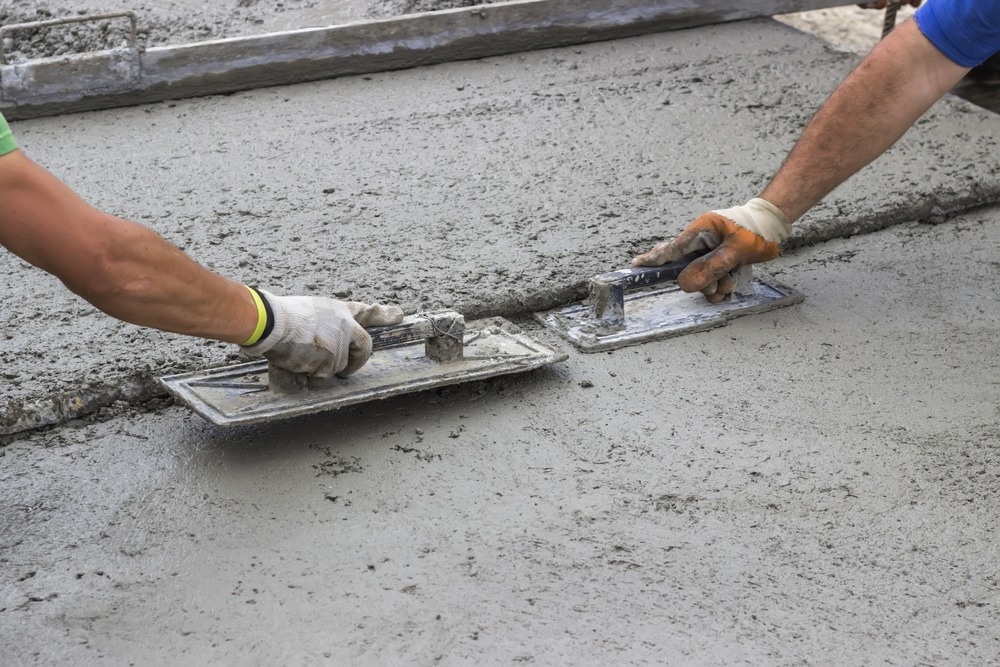The use of nanoparticles in concrete has gradually come to be regarded as a high-potential, quick restoration, and high-performance material.

Study: Influence of nanomaterials on the water absorption and chloride penetration of cement-based concrete. Image Credit: serato/Shutterstock.com
In a study published in the journal Materials Today, a short analysis was conducted on the impact of nano-SiO2, nano-Al2O3, graphene oxide, carbon nanotubes, nano-TiO2, nano-Fe2O3, nano-clay/metakaolin, and nano-CaCO3 usage on the water permeability and chloride infiltration of cement concrete. The possibility of employing nanomaterials in cement concrete with the requisite construction material qualities was discovered.
Cement Concrete and its Uses
Cement concrete is manufactured at a pace of 25-30 billion tons per year, accounting for 8-9 percent of total human greenhouse gas emissions. The most expensive component of concrete is the binder substance 'cement.' Every year, around 5-6 billion tons of cement are generated worldwide, equating to a per capita usage of one ton of cement.
Reduced usage of Portland cement may successfully assist in greenhouse gas emission reductions. Carbon nanotubes (CNTs), nano-SiO2 (nS), nano-Al2O3 (NA), graphene oxide (GO), nano-TiO2 (NT), nano clay (NC), nano-ZnO2 (NZ), and nano-Fe2O3 (NF) may all be used to improve the mechanical and stability qualities of concrete.
Properties of Nanomaterials
Nanomaterials are particles with dimensions ranging from 1 to 100 nm. The integration of nanoparticles in cement concrete composites has recently received much interest.
Using nanoparticles as a partial replacement for binders or as a filler material in cement concrete affects the rheological behaviour and morphology at the nanoscale, considerably increasing the mechanical and durability properties of cementitious materials.
Effectiveness of Nano SiO2 (nS)
Nano-SiO2 showed to be particularly effective in minimizing concrete water absorption. It was lowered by 58 percent with two percent nano SiO2 and 36.84 percent with three percent nano-SiO2. According to prior research, this improvement was due to the accelerating impact nS has on the main hydration process, which leads to matrix densification.
The authors also believed that the calcium hydroxide generated is lower in volume. This calcium hydroxide is absorbed much faster in the subsequent hydration step, resulting in additional microstructural improvement.
In comparison to other nanoparticles, the usage of more than 4% nano-TiO2 resulted in worsened concrete performance. According to recent research, the water absorption for the control and 4 wt percent nano-TiO2 concrete was 5.12 and 4.22 percent , respectively, after 168 hours of exposure. Nevertheless, the water absorption capacity of mixtures containing 15% FA was lower than that of mixtures containing 4% NT.
Nano-SiO2 optimized the porous structure of concrete, lowering its chloride ion conductance. Adding 0.3 wt percent nano-silica lowered the chlorine migration and diffusion coefficients by significant amounts.
As per the authors, this decrease was caused by nano-SiO2's ability to partly block transport channels and therefore separate them. They also observed that any additional increase in nS concentration resulted in aggregation and no further enhancement in susceptibility to chloride ion passage.
Carbon Nano Tubes & their Effect
Previous studies found that incorporating 0.05-0.1% carbon nanotubes lowered the chloride diffusion coefficient by 12 percent. This decrease was unaffected by the kind of carbon nanotubes (CNTs) employed. Nevertheless, pure carbon nanotubes were the most efficient in preventing the spread of all the carbon nanotubes studied.
The authors also revealed that the lesser the w/c, the higher the efficacy of CNTs in limiting chloride ion infiltration.
Highlights of the Study
It was observed that incorporating nanomaterials was highly effective against water absorption and chloride penetration. A small quantity of nano-silica was also added, which decreased water absorption by more than half. Carbon nanotubes at 0.08 weight percent decreased water absorption by 35.8 percent. 0.8 weight percent graphene oxide cut it almost in half. Water absorption was lowered by two-thirds by using a smaller nano-CaCO3.
The water absorption of concrete was reduced using nano alumina. A small concentration of nano-silica decreased chloride migration by one-fourth of its previous value, whereas a negligible percentage of graphene oxide decreased chloride penetration depth by half. Carbon nanotubes decreased the chloride diffusion coefficient by 13%.
Reference
A.Abdalla, J., Thomas, B. S., A.Hawileha, R., & Kabeer, K. A. (2022). Influence of nanomaterials on the water absorption and chloride penetration of cement-based concrete. Materials Today. Available at: https://doi.org/10.1016/j.matpr.2022.06.427
Disclaimer: The views expressed here are those of the author expressed in their private capacity and do not necessarily represent the views of AZoM.com Limited T/A AZoNetwork the owner and operator of this website. This disclaimer forms part of the Terms and conditions of use of this website.